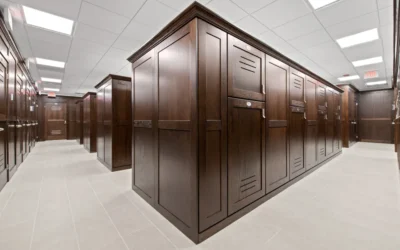Slowly but surely, self-storage investors are taking advantage of perhaps the most buzzed-about real estate tax-saving tool of 2019 — Opportunity Zones.
San Antonio, TX-based business management company DPR Investments Ltd. recently became the first investor to hop on the Opportunity Zone bandwagon in Texas with the announcement that it’s building a $16 million self-storage facility at the more than 1,300-acre Brooks mixed-use campus in San Antonio. DPR expects to break ground in the fall of 2019.
Halfway across the country, Morristown, NJ-based real estate firm The Hampshire Cos. is developing a 100,000-square-foot storage facility on a 2-acre site within an Opportunity Zone in New London, CT. Construction is set to begin in the second quarter of 2019.
What are Opportunity Zones?
As explained by real estate data provider Yardi Matrix, a provision of the Tax Cuts and Jobs Act of 2017 lets investors defer or avoid taxes on capital gains from any investment sale, including stocks, bonds or real estate, if the money is reinvested in an Opportunity Zone. The U.S. Treasury Department has certified more than 8,700 of these zones, all of which have been deemed low-income.
Investors who hold their Opportunity Zone investments for five years will pay no taxes on 10 percent of the gains, Yardi Matrix said. After seven years, 15 percent of the gains won’t be taxed. Investors who hold investments for 10 years can avoid paying taxes on all gains.
Opportunity Zones “have the potential to draw capital from non-traditional sources — such as high-net-worth individuals, family offices and endowments — and to spur revitalization in blighted urban areas and tertiary markets,” Yardi Matrix noted in a client bulletin.
Across the country, investors potentially could snag an estimated $6 trillion in unrealized capital gains by investing in Opportunity Zones.
According to Real Capital Analytics Inc., a provider of commercial real estate data, Opportunity Zones account for 10 percent of the “investable universe” in the U.S. and have averaged $50 billion in annual acquisition volume in recent years.
Where are the Opportunity Zone opportunities?

Brooks is bringing Texas’ first Opportunity Zone project to life.
There’s not been a flood of self-storage investors who’ve indicated they’re pursuing Opportunity Zone projects. In fact, some self-storage executives contacted by the SpareFoot Storage Beat were hesitant to discuss Opportunity Zones, as they were still getting up to speed on them.
As it stands now, there’s no guidebook for self-storage investors that tells them where they might put money into Opportunity Zones.
Yardi Matrix has developed a tool that enables investors to search for possible Opportunity Zone investments, including self-storage facilities.
In DPR’s case, the company commissioned five independent studies to determine the best use of the 9.2-acre Opportunity Zone parcel at the Brooks campus, and each study identified demand for self-storage. The project will include flex space earmarked for small businesses.
“The opportunities that exist at Brooks are unbelievable,” Jimmyy Day, owner of DPR, said in a news release. “There is great potential for what we can do, and the Opportunity Zone designation provides a real incentive to invest.”
A new report compiled by Smart Growth America and other organizations also provides insight into prospective locations for self-storage investment within Opportunity Zones.
The report doesn’t specifically mention self-storage, but its ranking of the top Opportunity Zone markets for multifamily asking rents could be an ideal place for storage investors to consider:
- New York City, NY, including Manhattan, Queens, Brooklyn, the Bronx and Newark, NJ.
- Campus District of Cleveland, OH.
- Fashion District, Hollywood and Wilshire Central areas of Los Angeles, CA, as well as downtown Long Beach, CA.
- Downtown Oakland, CA, and downtown San Jose,
- Downtown, First Hill and International District areas of Seattle, WA.
- Center City East and Fairmount areas of Philadelphia, PA.
- Inner Harbor of Baltimore, MD.
- Brickell neighborhood of Miami, FL.
- Downtown Houston, TX.
- Downtown Portland, OR.
While the report notes that the places on its list are “desirable” — featuring a mix of building types, diverse housing and transportation options — it cautions that the majority of Opportunity Zones are low-density areas with “significantly higher housing and transportation costs, higher greenhouse emissions and lower quality of life.”
Is it worth it to invest in Opportunity Zones?
No one knows for sure whether Opportunity Zone investments will be a bust or a boom, but the zones do hold some promise for self-storage investors.
John Sweeney, principal of Park Madison Partners LLC, a New York City-based real estate capital-raising and advisory firm, said many Opportunity Zone neighborhoods lack the underlying user demand needed to support office, retail, multifamily or hotel properties.
“However,” he added, “other uses such as industrial or self-storage could still make economic sense. Industrial and self-storage properties tend to be located in lower-density areas anyway, so the additional tax incentive could increase the attraction of locating them in Opportunity Zones.”
Today, it’s unclear under current IRS rules precisely what qualifies for Opportunity Zone investments, leaving some planned projects in limbo, according to Sweeney.
“Investors should keep in mind that tax forgiveness will make a good deal better, but it won’t save a bad deal from losing money,” Sweeney said.
Some caveats for self-storage
Blake Christian, a tax partner at Los Angeles-based accounting firm HCVT LLP, highlighted several twists in the Opportunity Zone program that self-storage investors should be aware of.
Christian said that if a storage facility already exists in an Opportunity Zone, the IRS requires the post-2017 buyer to invest an amount at least equal to 100 percent of the cost basis that can be allocated to the storage units and other improvements — but excluding land — for the property to qualify as “original use” and, thus, be eligible for the Opportunity Zone program.
“Therein lies the problem,” he said. “Unless the facility has vacant land to build out new storage units, the new buyer would rarely encounter a self-storage property that would need 100 percent in upgrades.”
Additionally, Christian said, if an investor buys raw land and builds a self-storage facility from the ground up, the investor would be viewed as the “original user.” But there’s no specific monetary criteria for making improvements to unimproved real estate in an Opportunity Zone, he said.
Christian said he’s concerned that the IRS might treat a self-storage facility as a “passive” rather than “active” asset and, as such, it would not meet Opportunity Zone standards.
Still, he noted that the Opportunity Zone program “is a rare tax-planning tool that allows a taxpayer to diversify out of single or multiple assets and invest in other classes of assets.”







